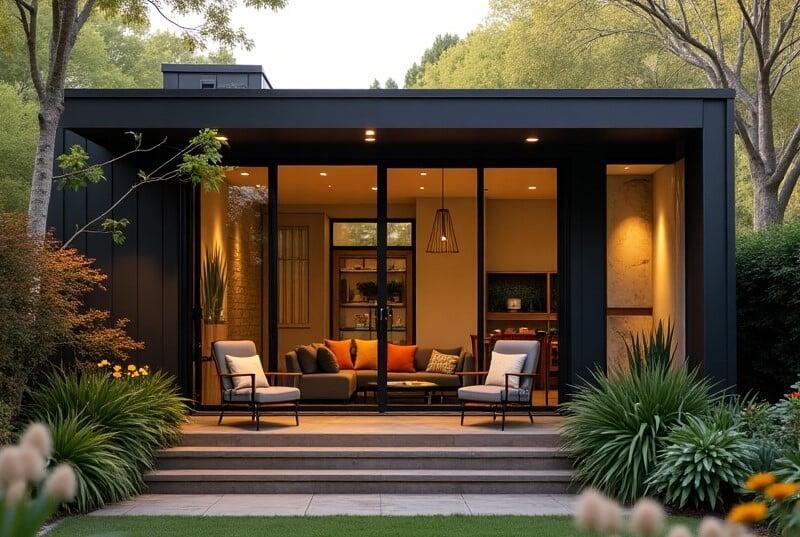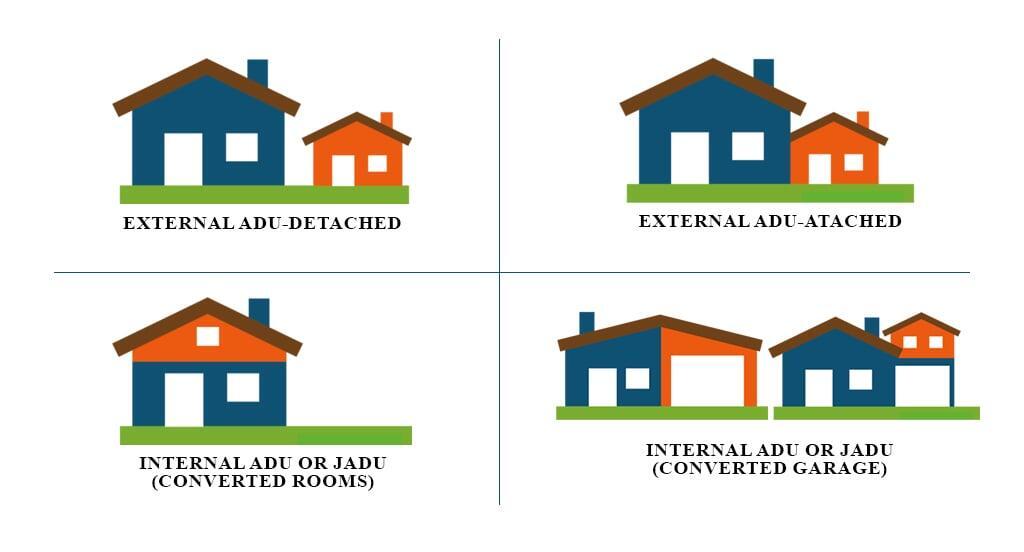
What is an Accessory Dwelling Unit (ADU)?
An Accessory Dwelling Unit (ADU) is a secondary, self-contained residential unit located on the same lot as a primary single-family or multi-family dwelling. ADUs are designed to provide independent living spaces with their own kitchen, bathroom, and sleeping areas. They are commonly referred to as granny flats, in-law units, backyard cottages, or secondary units.

Types of ADUs
- Detached ADU: A standalone structure separate from the primary residence.
- Attached ADU: A unit that shares a wall with the main house but has its own entrance.
- Garage Conversion: Transforming an existing garage into a livable space.
- Basement or Internal Conversion: Utilizing existing space within the primary dwelling.
Benefits of Building an ADU
- Additional Income: Renting out an ADU can provide a steady income stream, helping homeowners offset mortgage payments.
- Affordable Housing: ADUs offer a more affordable housing option compared to traditional homes, benefiting both homeowners and renters.
- Multi-Generational Living: ADUs provide a solution for families wishing to live close to each other while maintaining privacy.
- Increased Property Value: Properly constructed ADUs can enhance the overall value of a property.
Understanding ADU Permits in California
Before embarking on the construction of an ADU, obtaining the appropriate permits is essential to ensure compliance with local zoning laws and building codes. An ADU permit is the legal authorization granted by local authorities to build or convert a space into an ADU.
Importance of an ADU Permit
- Legal Compliance: Ensures the ADU meets all local zoning and building regulations.
Safety: Guarantees that the construction adheres to safety standards, protecting occupants.
Avoiding Penalties: Prevents potential fines or legal issues associated with unpermitted construction.
Types of Permits Required
- Planning/Zoning Permit: Verifies that the proposed ADU complies with local zoning laws, including setbacks, height restrictions, and land use.
- Building Permit: Approves the construction plans and ensures the structure meets safety and building code requirements.
Step-by-Step Guide to Obtaining an ADU Permit in California
1. Research Local Regulations
While California has established statewide guidelines for ADUs, local jurisdictions may have additional requirements. It's crucial to consult your city's planning or building department to understand specific regulations, such as:
Maximum unit size
Setback requirements
Parking provisions
Height restrictions
2. Design Your ADU
Work with a licensed architect or designer to create detailed plans for your ADU. These plans should include:
Site plan
Floor plans
Elevations
Structural details
Energy compliance documentation (Title 24)
3. Submit Permit Applications
Submit your ADU plans to the local planning and building departments for review. Ensure all required documents are included to avoid delays.
4. Pay Fees
Be prepared to pay various fees, including:
Plan check fees
Building permit fees
Impact fees (note: some fees may be waived for ADUs under 750 sq. ft.)
5. Permit Review Process
The local jurisdiction will review your application to ensure compliance with all regulations. In California, cities have up to 60 days to approve or deny an ADU permit application .
6. Obtain Necessary Approvals
Once your application is approved, you'll receive the necessary permits to begin construction. Ensure all required inspections are scheduled during the building process.
7. Final Inspection and Occupancy
After construction is complete, schedule a final inspection to ensure the ADU meets all safety and code requirements. Upon passing the inspection, you'll receive a Certificate of Occupancy, making the ADU legally habitable.
Financial Incentives and Resources
California offers several programs to assist homeowners in financing ADU construction:
CalHFA ADU Grant Program: Provides up to $40,000 to reimburse homeowners for predevelopment costs associated with building an ADU .
Local Programs: Various cities and counties offer grants or low-interest loans for ADU construction. For example, San Diego's Housing Commission offers financial assistance for ADU projects .

